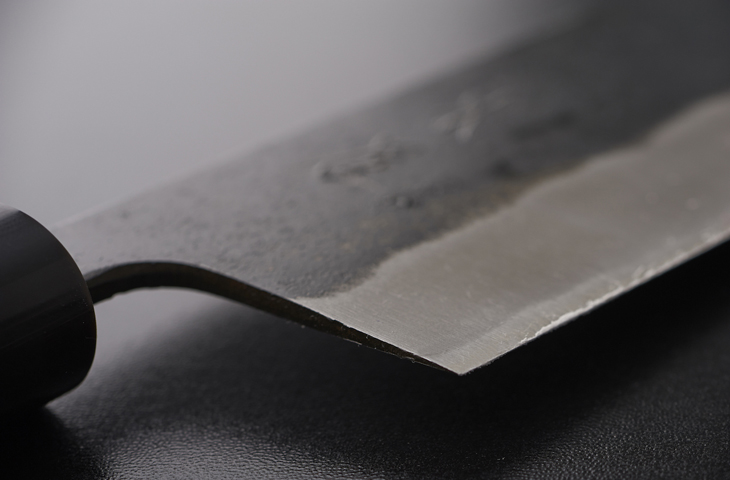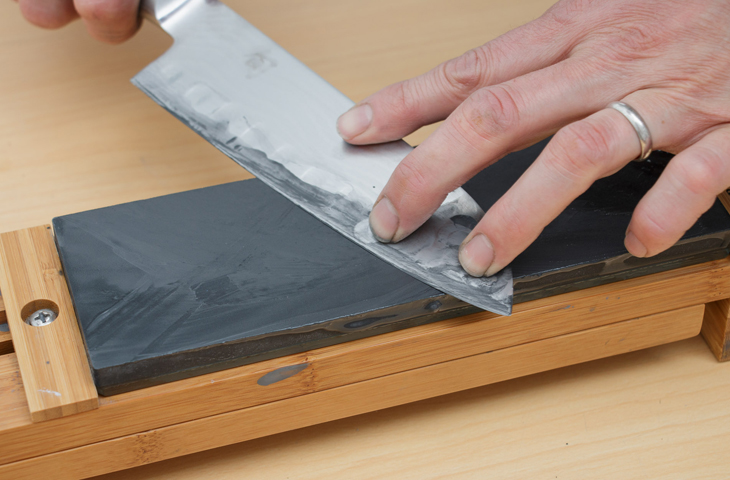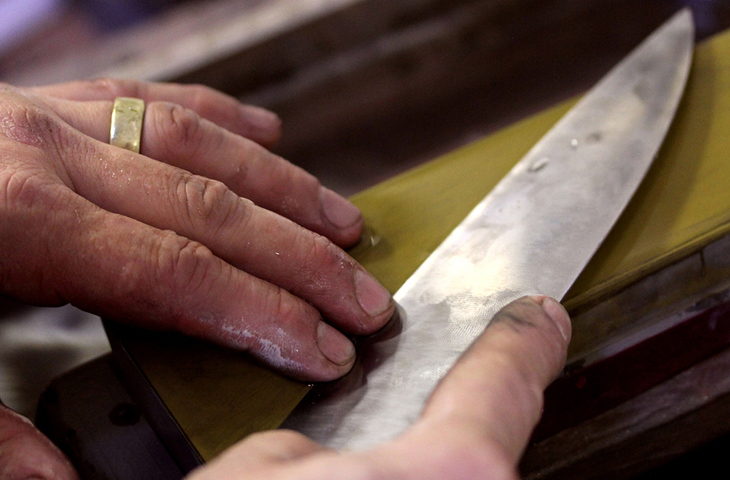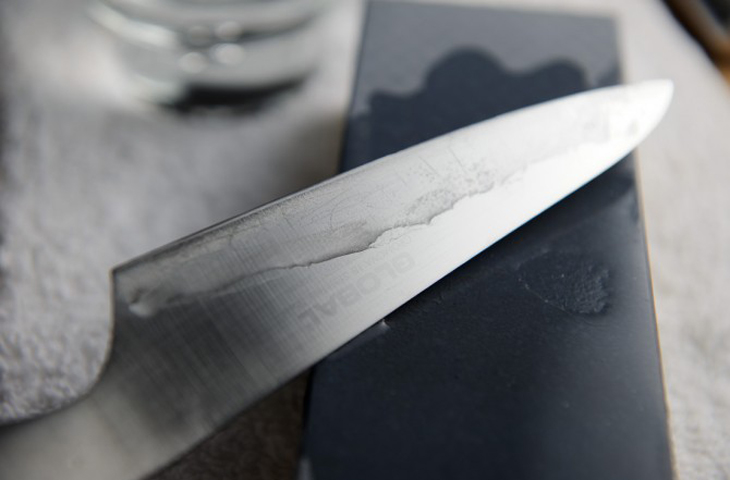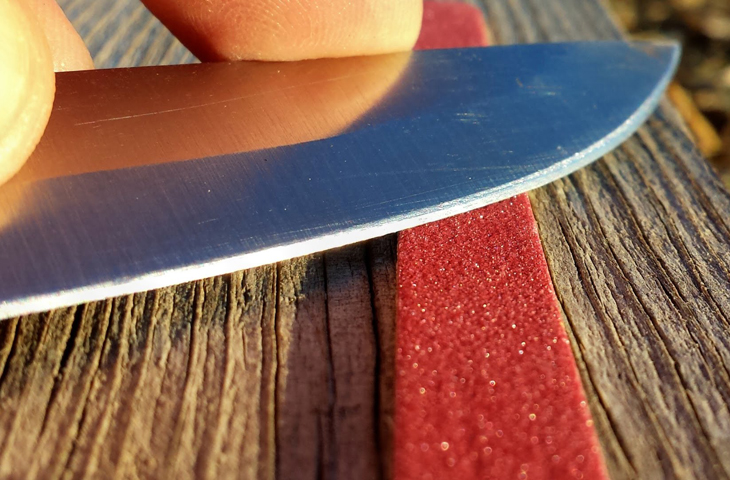It is difficult to imagine professional cooking without good and sharp knives. A set of knives is the main shrine of any chef and this fact is dictated by practice. However, even having collected a small collection of knives for different cases, you do not solve the problem of their severity. It is on it that the fineness of the processing of products depends, and it is better to maintain it independently. If you still have a knife in your kitchen - immediately send it to the garbage because it is completely useless and learn to sharpen the knife yourself - you can make sure that this is not anything complicated.
- Grindstone -
Today, there may be problems with the purchase of a good grindstone - once they were sold in any store, but now they are quite rare. However, if you still found such a stone - take care of it, because this thing can be passed on by inheritance. Sharpening stones can be of varying degrees of roughness. The toughest stones are designed for the most aggressive grinding, for household use there will be enough ceramic bar of medium grain. For sharpening large kitchen knives metal moussat is often used, however, we recommend to master knife sharpening primarily on stones.
- Factory sharpening -
All knives are already factory-sharpened and in most cases the user only needs to maintain the sharpness of the cutting edge. In order to do this correctly, one must understand the angle of the cutting edge of the knife. To sharpen a knife it is necessary trying to observe this angle. Sharpening from a different angle will take much longer and may damage the blade rather.
- Correct angle -
The range of knife sharpening should be within the angle of 10 to 30 degrees. The larger the angle, the faster the knife will again need sharpening. One of the most difficult moments in sharpening knives is observance of the chosen angle. To achieve the progress will help the correct mechanics of movements when sharpening.
- Hand movements -
In order for your grinding to be more effective, you should perform arcuate movements when you touch the blade and stone. Synchronizing such movement and observing the angle is the key to success in grinding a knife. Beginners are advised to put a coin under the back of the blade to keep the desired slope.
- Water and oil -
To achieve a more effective grinding will help a drop of oil, added to the grindstone. A special mineral oil is best for this, however, olive oil will do well too. Its task is to lubricate the blade for better slip. However, many sharpen knives using only water, from time to time moistening the stone.
- Strive for imperfection -
Many of those who try to sharpen the knife themselves, try to bring the blade to an ideal shaving sharpness. Such a blade will easily cut paper, but in the case of products, it will quickly become blunt and require edits. The coarser and deeper edge of the knife contributes to an additional effect on the fibers of the products, that is, this knife also acquires the properties of the saw. Rough grinding is best suited for meat, vegetables and most other products, in the case of fish, it will be a thin shaving sharpener.


